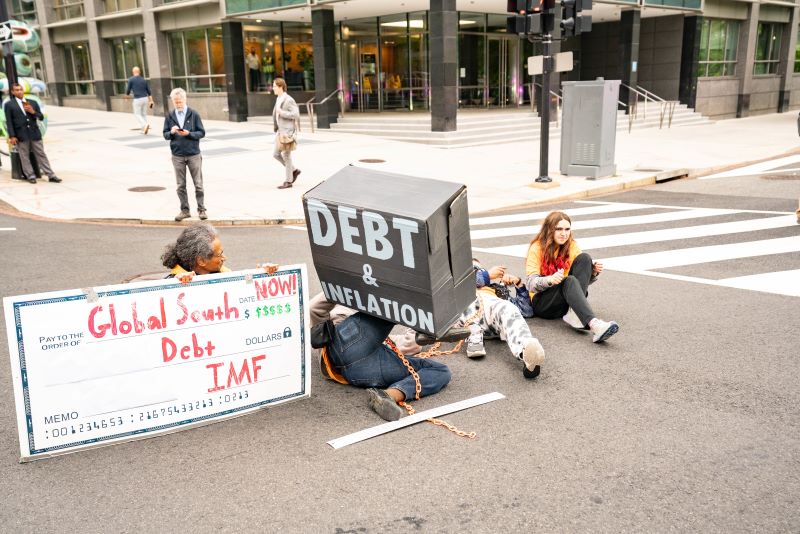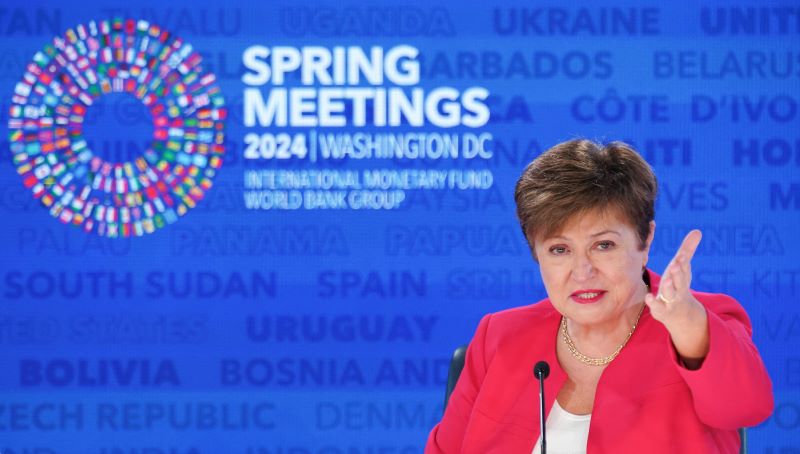Comment: Changes are afoot at the IMF and World Bank – but debt-squeezed developing nations need far faster access to more finance for climate action
Rachel Kyte is professor of practice in climate policy at the Blavatnik School of Government, University of Oxford.
With spring in full bloom, the world’s finance ministers, development and financial leaders, and philanthropists met for the World Bank and International Monetary Fund (IMF) Spring Meetings in Washington, DC last week.
In their midst, Brazil, the current president of the G20, insisted on a balanced focus between ending poverty and food insecurity and combating climate change. President Lula makes no secret of his desire for a new international financial architecture, designed for different challenges, in a different century with new emerging powers at the table.
2023 was the year leaders agreed the current architecture was no longer fit for purpose. 2024 needs to be the year the IMF, multilateral development banks (MDBs), and their shareholders rapidly implement reforms and begin the process for increasing capital.
In Washington, the presidents of the MDBs held their first-ever “summit” – a direct response to insistence by G20 leaders and expert groups that the system must work more effectively together as one, in addition to individual bank reforms.
Since G20 leaders last September called for a better, bolder and bigger MDB system, and the World Bank responded with its own roadmap of reform, changes are underway, especially in areas where the MDB managements have authority. Where progress is less clear is on issues requiring their shareholders to take the lead.
Last week, coalitions of countries met with private finance, think tanks, philanthropy and civil society to discuss the key problems of debt, reversals on global development goals and lagging climate action. The policy proposals on what to do are manifold, and there is a deep well of goodwill to help with the current system’s obvious failures. But all eyes must be on governments.
In one gathering of finance ministers, IMF Managing Director Kristalina Georgieva boiled down the climate change to-do list to the two things only they can do: price carbon effectively and remove harmful subsidies in the fuel, food and fisheries sectors. So how do we move from rhetoric to action?
Geopolitical pressure and debt distress
We cannot ignore the worsening context. Wars in Ukraine and Israel-Gaza, and their costs, threaten progress. Famine and conflict are taking their toll in many other countries too. Climate impacts are severe and intensifying, with crippling extreme heat stretching across India and closing school systems from the Philippines to Sudan.
Many countries are suffering from debt distress and many more are channeling all available funds to service their debt at the expense of basic services, a serious impediment to investing in their much-needed climate resilience. Even more countries are suffering a crisis of liquidity.
Whether it’s debt, debt service, or liquidity, it’s a crisis. Yet, at the Spring Meetings, the crisis response still lacked urgency.

Protesters gather outside the IMF and World Bank’s 2024 Spring Meeting in Washington D.C., on April 19, 2024. (Photo: Andrew Thomas/Sipa USA)
Debt rescheduling was called out by the World Bank chief economist as inadequate. The details of how MDBs can use reflows of Special Drawing Rights as hybrid capital continues to be debated by the very same countries that urge climate action, and who themselves face fiscal pressure on their development and climate budgets.
While shareholders, creditors and the institutional leadership played pass the parcel, the finance ministers of Small Island Developing States (SIDS) – whose cumulative debt is around $40bn, and who have no tools to dig out of their growing indebtedness and climate crisis – were despairing. As the urgency of a lack of inclusion coupled with climate stress grows, is it time not to tweak the system but to break it in places?
For example, we could write off the debt of SIDS, while we begin new resource mobilization schemes from targeted forms of taxation to moral payments. If SIDS could face their short-term and existential challenges on a sounder footing, the international system could then expedite work on the problems of the next groups of vulnerable countries to mobilise investment in their resilience at scale.
Global billionaires tax to fight climate change, hunger rises up political agenda
To underline the bind countries find themselves in, during the time that MDB reform has become mainstream and Mia Mottley of Barbados and other leaders from emerging market and developing economies have called for a system reset under the banner of the Bridgetown Initiative, net flows of finance away from emerging and developing economies have grown.
If we were grading reform mid-terms, we would be looking at Bs for management making in-roads on better and bolder, but an F for shareholders stuck on the bigger. How do they get straight As by the end of the year?
IMF and World Bank at a crossroads
First, we need radical collaboration among MDBs and between MDBs and development finance institutions, national development banks and private finance on the processes needed to get loans and guarantees disbursed faster. Some MDBs have moved to cooperate on procurement, and there are many suggestions on how to make country platforms work. But radical collaboration involves much deeper streamlining, due diligence, term sheets, analysis, talent, and pooled capital.
Second, pressure must
Read More

